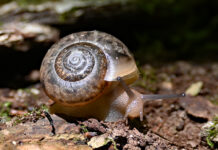Back in February, as a brutal winter unfolded, I explained that feeding deer in winter is a bad idea. I quoted experts from the Pennsylvania Game Commission, the West Virginia Division of Natural Resources, and a veterinarian from the National Wildlife Health Center in Wisconsin. All agreed that supplemental feeding is bad deer management.
That column generated a lot of mail. About 75 percent of the letters and emails I received expressed shock that winter feeding could actually harm deer. Most pledged to stop feeding deer. The rest of the mail came from inveterate deer feeders who treat deer more as domestic livestock than wildlife. They clearly considered deer to be “theirs.” Several believed that feeding deer would produce better deer during hunting season.
But wildlife is owned by the state, by all the citizens of the state. Feeding them doesn’t change this principle. With severe winter weather already upon us, the ”don’t feed deer” mantra is worth repeating. Among wildlife professionals, it’s a message that cannot be overemphasized.
Consequences
The Wildlife Management Institute (www.wildlifemanagementinstitute.org), an independent conservation organization that works to improve the professional foundation of wildlife management, explains the consequences of supplemental feeding of deer and other wildlife in a booklet entitled, Feeding Wildlife… Just Say No! (2000, $3.25).
The booklet’s salient points include:
• Supplemental feeding changes movements patterns and concentrates deer at feeding stations,
• Concentrations of deer increase their susceptibility to contagious diseases and leads to over browsing of nearby native forage plants,
• “Deer corn” is often corn considered unfit for human or livestock consumption. It can be tainted by toxins produced by mold, and
• Short term effects of supplemental feeding can lead to population spikes that result in crop damage, ornamental plant damage, more deer-vehicle collisions, and habitat damage that hurts many other species of wildlife.
Deer digestive tract
The digestive tract of deer is a complicated physiological system. Just the right combination of microorganisms, enzymes, and pH enable deer to digest a normal winter diet of woody vegetation. When offered a sudden diet of corn, a deer’s digestive system doesn’t have time to adjust to the high carbohydrate load.
As the seasons change, deer diet changes, and it takes deer weeks to slowly adapt to new foods. For example, in the summer months they may feed on forbs and other herbaceous vegetation. Come fall they gorge on acorns. And in winter they switch to woody browse. As their diet changes, so does the physiology of the digestive system.
But when a big storm blows in, people suddenly want to help the deer by feeding them corn. It’s cheap and widely available. But when it’s offered suddenly, corn wreaks havoc on a deer’s digestive system. It takes deer two to four weeks of feeding on a new food source to establish populations of microbes necessary to digest the new food. It doesn’t happen in just a few days during a snowstorm. Healthy individuals that might survive in the short term can succumb to complications weeks later.
Corn belt conundrum
This also explains the “corn belt conundrum.” Why, many readers asked, do deer thrive in places where corn is a primary crop, places like Ohio, Indiana, and Illinois? It’s because corn is almost always available. From young plants in the spring to stubble into the winter, there’s usually a supply of corn. So it’s not suddenly introduced into the diet. Deer in corn country have digestive systems adapted to corn as a primary food.
Notice how often I’ve used the words “sudden” and “suddenly.” That is the key to the deer feeding problem. Deer cannot physiologically adapt to the sudden availability of corn.
Don’t feed deer
So please don’t feed deer this winter. Some may starve, and some may fall to disease and predators, but that’s how healthy populations stay healthy. Deer may spend time in your backyard or back forty, but they are not your responsibility.
To help the local deer population, concentrate on habitat improvement. Plant mast-bearing trees and shrubs. Plant a stand of conifers to provide winter cover from wind and snow. And create forest openings to stimulate the growth of the woody browse that sustains deer herds all winter long.












